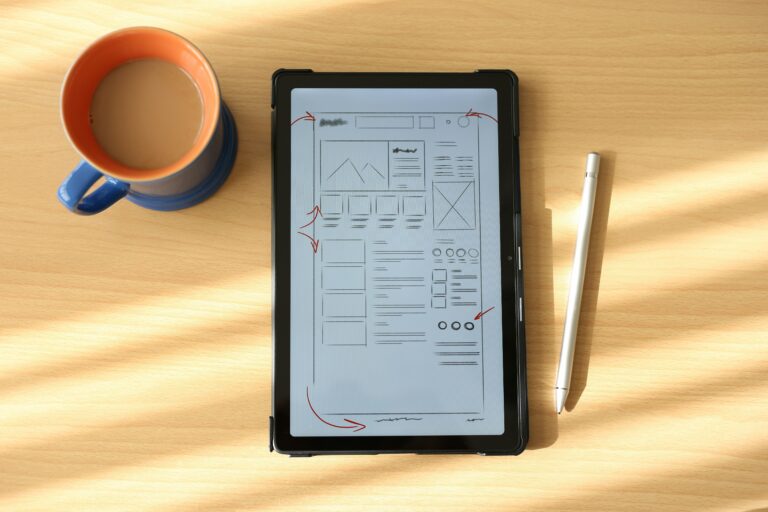In the fast-paced world of software development and entrepreneurship, the term “Minimum Viable Product” (MVP) has gained significant popularity. An Minimum Viable Product is a crucial concept for start-ups and product management teams looking to validate their ideas, gather user feedback, and efficiently allocate resources.
In this blog, we will delve into the definition, benefits, and key considerations of a Minimum Viable Product, enabling you to understand its importance in today’s competitive market.
Defining the Minimum Viable Product:
At its core, a Minimum Viable Product (MVP) is the most basic version of a product that allows entrepreneurs to test their assumptions and hypotheses in the market with minimal effort and resources. It is a strategic approach that focuses on building a product with just enough features to satisfy early adopters and gather meaningful feedback.
Key characteristics and elements of an Minimum Viable Product:
An MVP possesses several defining characteristics:
- Solves a specific problem: An MVP aims to address a well-defined problem or pain point for a target audience.
- Minimalistic features: It includes only the essential features required to deliver value and test the product’s viability.
- Iterative development: MVPs are built in iterations, allowing for continuous improvement based on user feedback.
- Rapid deployment: The focus is on quickly launching the product to gather valuable insights and validate assumptions.
- Core user experience: While basic, the product should still provide a satisfactory user experiences.
- Different perspectives and interpretations: The concept of an MVP can vary depending on the industry, product type, and organisational goals. Some may emphasise a “smoke test” MVP, which tests demand for a product before fully building it. Others may focus on “concierge” MVPs, which involve manually delivering the service to customers to understand their needs. The interpretation of an MVP can be flexible, tailored to the specific context and objectives of a project.
The benefits of an Minimum Viable Product:
Validating assumptions and reducing risks
By launching an MVP, entrepreneurs can test their assumptions and gather real-world data to validate their product concept. This helps in reducing the risks associated with investing significant time and resources into a full-fledged product that may not meet market needs.
Cost and resource optimisation
Developing an MVP allows for a lean and efficient allocation of resources. By focusing only on the essential features, unnecessary time and costs associated with building elaborate functionalities can be avoided.
Faster time-to-market
With an MVP, entrepreneurs can enter the market quickly and gain an early-mover advantage. The rapid deployment of a basic version of the product enables teams to gather feedback and make iterative improvements while competitors are still in the planning or development stages.
Gathering user feedback and improving product-market fit
An MVP serves as a feedback loop, allowing entrepreneurs to collect valuable insights from early adopters. This feedback helps in refining the product, identifying pain points, and ensuring a better product-market fit.
Building an effective Minimum Viable Product
Building an effective product involves several key considerations:
Identifying the problem and target audience
Clearly defining the problem your product aims to solve and identifying the target audience is crucial. This helps in understanding user needs and aligning the product’s features accordingly.
Defining the essential features
Determine the core features necessary to address the identified problem. Prioritise features based on their impact and relevance to the target audience.
Prioritising and sequencing features
In an Minimum Viable Product, not all features can be developed simultaneously. Prioritise and sequence the features to ensure the most critical ones are implemented first, delivering value to users early on.
Creating a compelling user experience
Although an MVP is minimalistic, it should still provide a positive user experience. Focus on usability, simplicity, and intuitive design to engage early adopters and gather meaningful feedback.
Setting measurable goals and success metrics
Clearly define success metrics for your MVP. Whether it’s user engagement, conversion rates, or feedback ratings, setting measurable goals helps track progress and make data-driven decisions.
Minimum Viable Product case studies and success stories
- Dropbox: Dropbox, a widely popular cloud storage and file-sharing platform, started as a Minimum Viable Product that quickly gained traction. Drew Houston, the co-founder of Dropbox, created a video demonstration of the product’s concept rather than building the full product right away. The video received over 70,000 sign-ups overnight, validating the demand for such a service. This smoke test MVP approach helped Dropbox secure funding and eventually grow into a multi-billion dollar company. Case Study: Dropbox’s MVP Approach
- Airbnb: Airbnb, a global online marketplace for lodging and accommodations, initially launched as an MVP in 2008. The founders, Brian Chesky and Joe Gebbia, created a simple website to list available spaces for rent during a sold-out conference in San Francisco. They managed to attract three guests who booked and stayed in their shared apartment, proving the demand for such a platform. This early validation paved the way for Airbnb’s exponential growth, with millions of listings worldwide today. Case Study: How Airbnb Built an MVP
- Zappos: Zappos, an online shoe and clothing retailer, is another notable Minimum Viable Product success story. Initially, the founder, Tony Hsieh, tested the market by taking pictures of shoes at local stores and posting them on a basic website. When a customer placed an order, Hsieh would purchase the shoes from the store and ship them to the customer. This MVP approach allowed Zappos to validate customer demand and prove the viability of selling shoes online. Eventually, the company grew to become a billion-dollar e-commerce giant. Case Study: Zappos’ MVP Journey
- Buffer: Buffer, a social media management platform, started as an MVP with a simple landing page and a basic scheduling feature. Co-founder Joel Gascoigne validated the product idea by manually handling and scheduling social media posts for the first 100 users. By closely interacting with these early adopters, Buffer gathered valuable feedback and insights that shaped the product’s future development. Today, Buffer has millions of users and offers a robust suite of social media management tools. Case Study: Building Buffer’s MVP
- Slack: Slack, a team communication and collaboration platform, employed an Minimum Viable Product approach that focused on a minimalistic but highly functional product. Initially, Slack launched as an internal communication tool within a gaming company called Tiny Speck. The MVP was built to solve their own team’s communication challenges. However, as other companies noticed its effectiveness, Slack evolved into a standalone product. Its intuitive design, powerful integrations, and ease of use attracted millions of users globally. Slack was eventually acquired by Salesforce for $27.7 billion in 2020. Case Study: Slack’s MVP Journey
These real-world case studies showcase how Minimum Viable Products have played a pivotal role in the success of these companies. By starting with a basic version of their products and gathering feedback from early adopters, they were able to validate their ideas, refine their offerings, and scale their businesses.
These examples highlight the importance of focusing on the core problem, understanding user needs, and continuously iterating based on feedback. They serve as inspiration for aspiring entrepreneurs and product teams looking to leverage the MVP approach to build successful and user-centric products.
Common mistakes with a Minimum Viable Product
While building an MVP, it’s crucial to avoid common pitfalls that can hinder its effectiveness:
Overbuilding and adding unnecessary features
Resist the temptation to add excessive features that don’t align with the core problem. Overcomplicating the MVP can lead to unnecessary development time and resource wastage.
Neglecting user experience and design
While minimalistic, the MVP should still provide a positive user experience. Neglecting design and usability can deter early adopters and skew the feedback received.
Lack of focus on the core problem
Stay focused on addressing the core problem identified. Distractions and feature creep can dilute the MVP’s purpose and impact.
Ignoring user feedback and market validation
Gathering feedback from early users is crucial for MVP success. Ignoring user feedback or failing to validate assumptions can lead to building a product that misses the mark.
Iterating and scaling from an Minimum Viable Product
An MVP is just the beginning of the product development journey. After gathering feedback and insights, it’s essential to iterate and scale accordingly:
Analysing user feedback and iterating the product
Carefully analyse the feedback received and prioritise improvements based on user needs and pain points. Continuously iterate the product to enhance its value proposition.
Scaling the MVP into a full-fledged product
Once the core problem and product-market fit are validated, scale the product by adding additional features and functionalities to cater to a broader user base.
Transitioning from MVP to product-market fit
As the product evolves, shift the focus from validating the idea to achieving product-market fit. Ensure the product resonates with a larger user base and delivers value at scale.
Tools and resources for building an Minimum Viable Product
Several tools and resources can aid in the MVP development process:
MVP development frameworks and methodologies
Explore methodologies such as Lean Startup, Design Thinking, or Agile, which provide frameworks for building and iterating MVPs effectively.
Prototyping and wireframing tools
Utilise tools like Sketch, Figma, or InVision to create interactive prototypes and wireframes that help visualise and test the MVP before development.
User testing and feedback platforms
Platforms like UserTesting or SurveyMonkey can assist in gathering user feedback and insights to inform MVP iterations.
Community resources and support for MVP development
Engage with communities, attend meetups, or join online forums to learn from others’ experiences and gain support during the MVP development journey.
Conclusion
The concept of a Minimum Viable Product holds immense value for start-ups and product teams as it provides a strategic approach to product development and validation. By understanding the core principles, benefits, and best practices of building an MVP, you can effectively test your assumptions, gather valuable insights, and navigate your way towards creating successful, user-centric products. Embrace the iterative nature of an MVP, learn from both successes and failures, and use the knowledge gained to refine and scale your product on the path to success.




